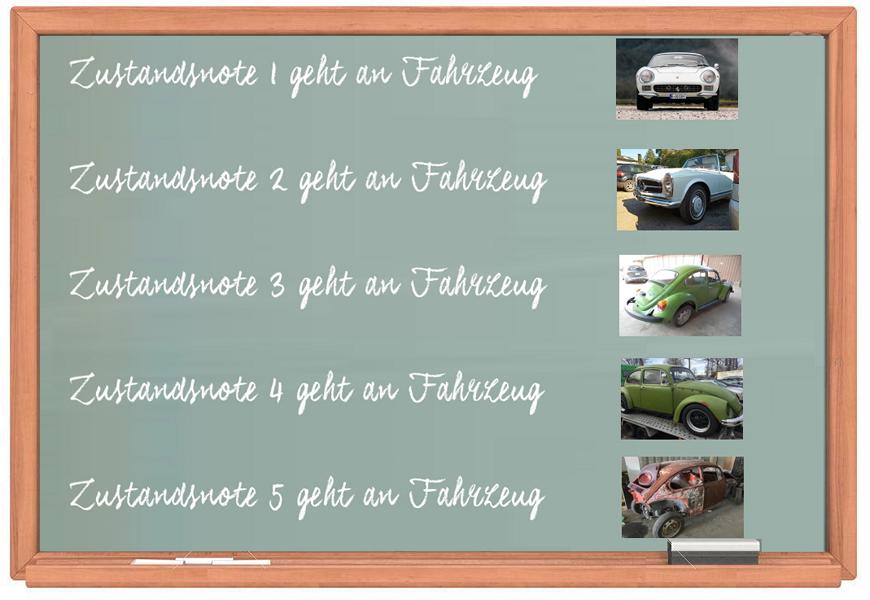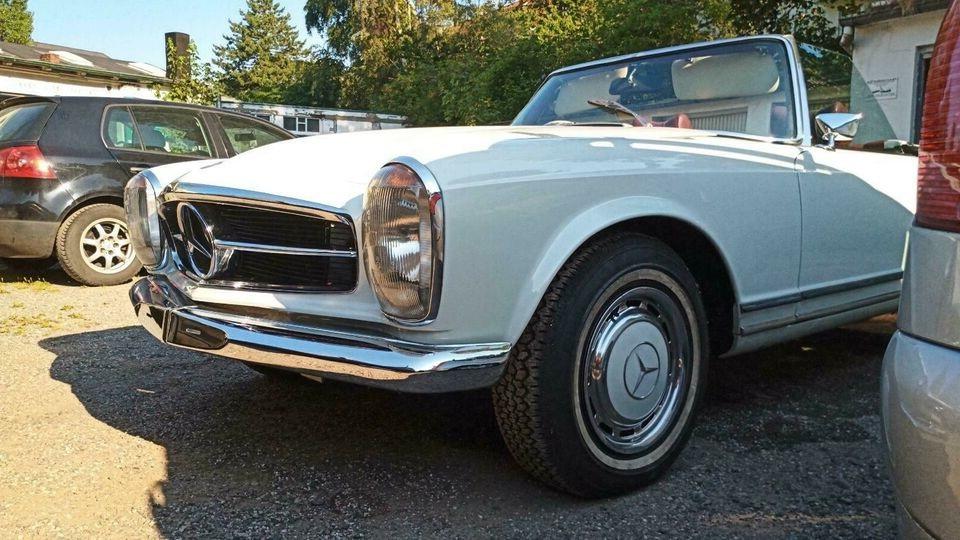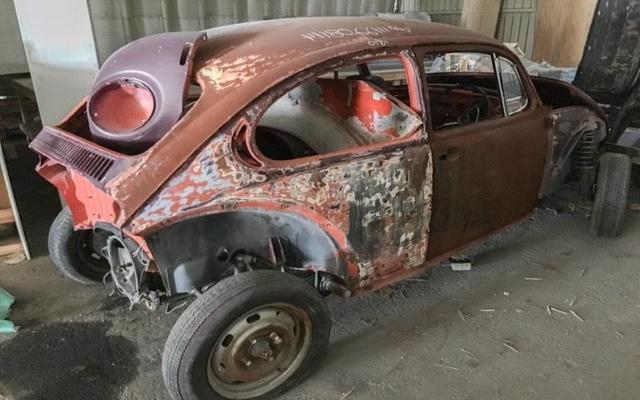Recently updated on January 25, 2021 at 10:36 am
The purchase price of a classic car depends largely on the respective condition of the classic car. All the more astonishing is the fact that many owners of classic cars have no or only very vague knowledge of these condition marks. They belong to the Classic car report and even to Brief report to. In order to close this knowledge gap, we have put together an overview of the individual status grades for you:
Grades from 1 to 5 are given!
The price evaluation of vintage cars according to the 5 status grades of the Classic Data standard has already proven itself internationally. This rating system, which was used by the company as early as the 1980s Classic data was developed, evaluates the condition of vintage cars according to a conventional school grading system with grades from 1 to 5. But what do these grades mean and what vehicle condition can buyers expect based on the respective grade?
Vehicle condition Notes 1:
Classic cars with the condition grade 1 have one impeccable Condition and are free of defects, damage and traces of use of a technical or optical nature. Thus, a classic car with the grade 1 is actually in like new or even better condition. Because of the technical possibilities and the multitude of different materials, professionally restored vehicles can even be in a better condition today than when they were first delivered. The condition grade 1 or even 1+ therefore stands for new oldtimers of immaculate quality.
Vehicle condition Notes 2:
For classic cars, the condition grade 2 stands for one good Vehicle condition without major defects on the vehicle. However, vintage cars with the grade 2 can show signs of use. In addition, the vehicles in this category are technically and optically flawless and are in a good, but not restored, original condition. The condition grade 2 can also be achieved by a professional restoration.
Vehicle condition Notes 3:
Oldtimers with a grade of 3 are in used Condition, but still have no major technical or visual defects. Despite minimal defects or signs of use, the oldtimer is completely roadworthy and without rusting. The minor defects of the classic car mostly reflect the mileage of the vehicle. In contrast to classic cars with grade 2, vehicles with grade 3 may have small traces of rust on non-load-bearing parts.
Vehicle condition Notes 4:
The grade 4 stands for classic cars in consumed Condition, as a result of which the vehicle is quite worn and partly only partially drivable. For approval for road traffic, vintage cars with grade 4 must undergo extensive restoration work. Further characteristics of grade 4 are a slight to medium rust perforation and a possibly incomplete condition. Category 4 vehicles do not necessarily have to be accident-free.
Vehicle condition Notes 5:
Classic cars with a grade of 5 are strong in one in need of restoration Status. Vehicles in this category have significant defects and are not drivable. In order to be approved for road traffic, extensive work must be carried out. Since the vehicles are not complete in most cases, classic cars in this category are usually only traded as part carriers. The condition assessments have a significant influence on the actual value of the vehicle and can only increase their value by assessing the originality or the history. Since vehicles that have not been restored can usually be rated better, vehicles with light to medium Patina partly the same prices as completely restored vehicles.
What else you should know:
The condition grades basically refer to vehicles with basic or standard equipment. Optional extras such as electronic windows, sunroofs or leather seats can contribute to higher ratings. This is why there are often condition assessments such as 2- or 3+, which are quite permissible.
"!" - The little difference
The well-known school grading system can, however, only inadequately reflect the condition of the classic car. After all, it only records the current technical status. But a working group in the parliamentary group Automobiles Kulturgut (PAK) has found a solution. If the condition grade is supplemented by an exclamation mark, the "!" Informs you that other factors determine the value. They can ONLY be read in the report.
What should you look for in sales contracts?
With their vehicles, sellers refer to the present evaluation according to the Classic Data System. In most cases this is exclusively a "Brief assessment", Which only includes a tour including a rough assessment of the vehicle. Such a “brief assessment” is therefore only suitable for insurance purposes. If you want to be 100% sure, then you should rely on a complete "Vehicle evaluation" consist. This is because the scope of the test is significantly higher and a test drive is also carried out with the vehicle.
We hope that you have read the info report on the topic / term Condition grades (Further designations / keywords: evaluation grades, evaluation criteria, oldtimer grades, classic grades, oldtimer grades, classic grades, car grades, historical grades) from the field of autotuning. Our goal is that the largest German-language tuning dictionary (Tuning Wikipedia) and to explain tuning terms from A to Z easily and understandably. Almost every day we expand this lexicon and how far we are, you can HERE see. Soon the next one will be Tuning scene concept be illuminated by us. By the way, you will be informed about new topics if you have ours Feed subscribe to.
Below are a few examples from our tuning lexicon:
But of course tuningblog has countless other articles on the subject of cars & car tuning in stock. Do you want to see them all? Just click HERE and look around. We would also like to provide you with news aside from the tuning. In our category Tips, products, information & Co we pick up contributions from car or accessory manufacturers. And also our category Test sites, laws, offenses, information has almost daily new information for you. Here are a few topics from our tuning wiki:
"Tuningblog.eu" - we keep you up to date on the subject of car tuning and car styling with our tuning magazine and we present you the latest tuned vehicles from all over the world every day. It's best to subscribe to ours Feed and will automatically be informed as soon as there is something new about this post, and of course also to all other contributions.
 tuningblog.eu Your magazine about tuning the car
tuningblog.eu Your magazine about tuning the car










